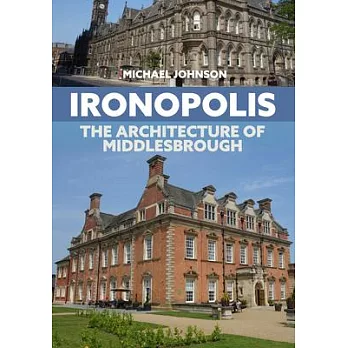In 1801 Middlesbrough was a farm with a population of twenty-five people. By the end of the century it had been transformed into an industrial metropolis of 90,000 inhabitants. This meteoric rise is unprecedented in English history. The world’s first railway was extended to Middlesbrough in 1830, turning it into a busy coal port. Following the discovery of ironstone in the Cleveland Hills, Middlesbrough developed into a major centre of iron and steel production. Conceived and built by its industrial pioneers, Middlesbrough was a Victorian new town, planned on a strict grid system into which were fitted all the amenities its hardworking population would need.Expressing this dramatic ascendancy, Middlesbrough’s architecture is surprisingly rich and varied. From the superb Victorian Gothic Town Hall to the iconic Transporter Bridge, Middlesbrough’s buildings exude civic pride and industrial triumph. The town boasts an incredible variety of churches, many of them displaying influences found nowhere else in the North East. Middlesbrough is fortunate to possess several churches by the brilliantly original architect Temple Moore, as well as the only known commercial building by Arts and Crafts pioneer Philip Webb. The turn of the millennium has seen Middlesbrough enhance its reputation with ambitious new projects such as the Middlesbrough Institute of Modern Art and public artworks by internationally renowned figures.Illustrated with archival images and specially commissioned modern colour photographs taken, Ironopolis: The Architecture of Middlesbrough is the first book to examine the town’s fascinating architectural history.



 天天爆殺
天天爆殺  今日66折
今日66折 

























 博客來
博客來 博客來
博客來 博客來
博客來 博客來
博客來 博客來
博客來